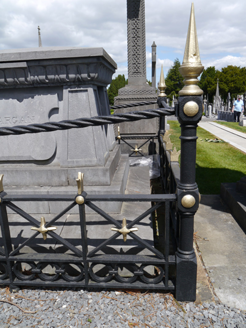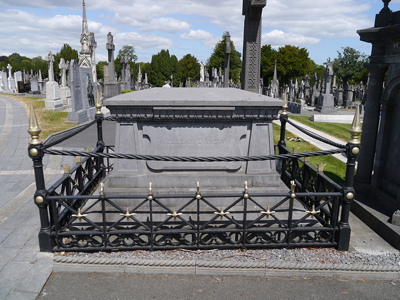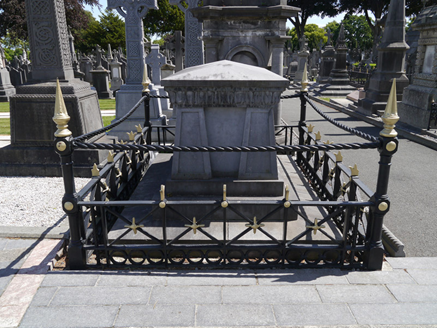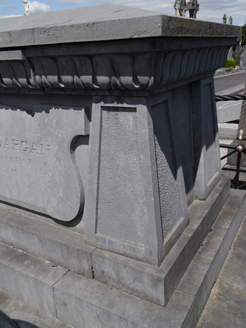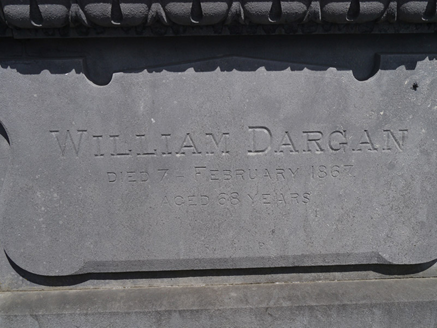Survey Data
Reg No
50130085
Rating
Regional
Categories of Special Interest
Architectural, Artistic, Historical
Original Use
Grave monument
In Use As
Grave monument
Date
1865 - 1870
Coordinates
314754, 236903
Date Recorded
21/06/2018
Date Updated
--/--/--
Description
Freestanding rectangular-plan limestone sarcophagus-type funerary monument, erected 1867 as burial place of William Dargan, celebrated engineer. Sloping limestone base supporting stepped plinth. Sarcophagus has tapered corner pilasters with recessed stippled panels, tulip-leaf cornice and saddleback lid. Profiled raised panel to front (south) face inscribed 'William Dargan Died 7 February 1867 aged 68 years'. Enclosure bounded by decorative cast-iron railings with tall corner piers, latter having fluted tapering finials, supporting wrought-iron rope rails. Located to east of O'Connell Monument.
Appraisal
An attractive and well-proportioned limestone funerary monument in the form of a sarcophagus, erected in 1867 to the memory of William Dargan (1799-1867), one of the most celebrated Irish engineers. Having served under Thomas Telford in his early career, he oversaw construction of the first railway line in Ireland, between Dublin and Dún Laoghaire, in 1833, and by the time of his death he had been responsible for over 1300km of railway connecting major centres throughout the country, marking a significant improvement in the island's communications and economic networks, often at his own personal expense. Dargan also did much to elevate the wages and conditions of labourers and was a key employer during the Famine years. The monument is characterized by restrained classical detailing and is rather sober, in contrast to the large number of elaborate Celtic and Gothic memorials that were popular at the period. It is enlivened by fine iron railings and is prominently located at a corner site. It is among a number of notable monuments of considerable architectural quality and craftsmanship within Glasnevin Cemetery. Originally known as Prospect Cemetery, the burial ground was opened in 1832 following a successful campaign by Daniel O'Connell, as a civic, non-denominational cemetery. It holds the graves and memorials of over one million people, including many notable citizens.
